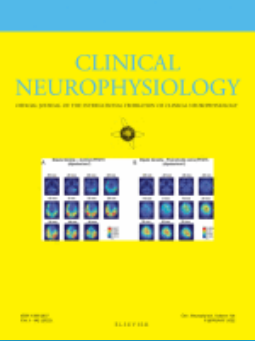"Objective
To evaluate the activity of cold Aδ-type fibers to thermal stimuli above human skin temperature (i.e., >32 °C).
Methods
Twenty young adults aged 20–24 years participated in this study. The cold-detection threshold was measured from a basal temperature of 40 °C using an adaptive staircase method with high-speed cooling ramps (170 °C/s). A total of 150 stimulations at 36 °C, 32 °C, 28 °C, 24 °C, 20 °C, 16 °C, 12 °C, 8 °C, 4 °C and 0 °C (15 each) were performed. After each stimulation, subjects estimated the intensity of cold sensation using a visual analog scale, and evoked potentials were recorded.
Results
The average cold-detection threshold was 35 °C (SD = 1.8). Regardless of the stimulation temperature, subjects reported a cooling sensation. Interestingly, reported increments in sensation were prominent for stimulation temperatures between 32 °C and 20 °C, but below this latter temperature sensations varied only very slightly. Evoked potential recordings revealed that decreasing temperature stimuli from a baseline of 40 °C induced a previously unreported N2P2 component with a mean N2 peak latency of 275 ms (SD = 13.1). The peak-to-peak amplitude of the N2P2 complex increased as the intensity of the cooling stimulation increased, exhibiting a profile comparable to subject-perceived intensity, namely, a major increase up to 20 °C, followed by a plateau to 0 °C.
Conclusions
The cool sensations reported by subjects were likely conveyed by Aδ fibers rather than by slow-conducting C fibers. Moreover, our rapid stimulation technique starting from a high temperature (40 °C) was capable of a) generating cold sensations at stimulation temperatures between 36 °C and 32 °C, and b) revealing the optimal activation range of Aδ fibers (20 °C–28 °C). Any decrease in temperature below this range did not result in a significant increase in sensation and thus probably did not evoke a significant increase in Aδ fiber activity.
Significance
The regular assessment of cold sensation in peripheral neuropathies (i.e., with temperatures below 32 °C), could be completed by investigating cold-detection thresholds at temperatures ranging from 40 °C to 32 °C. Indeed, the absolute threshold of cold perception appears to start at 35 °C. Changes in the activation threshold of cold fibers were more easily detectable at this level."
Authors:
Ségolène Lithfous, Louise Trocmet, Thierry Pebayle, Olivier Després, André Dufour


